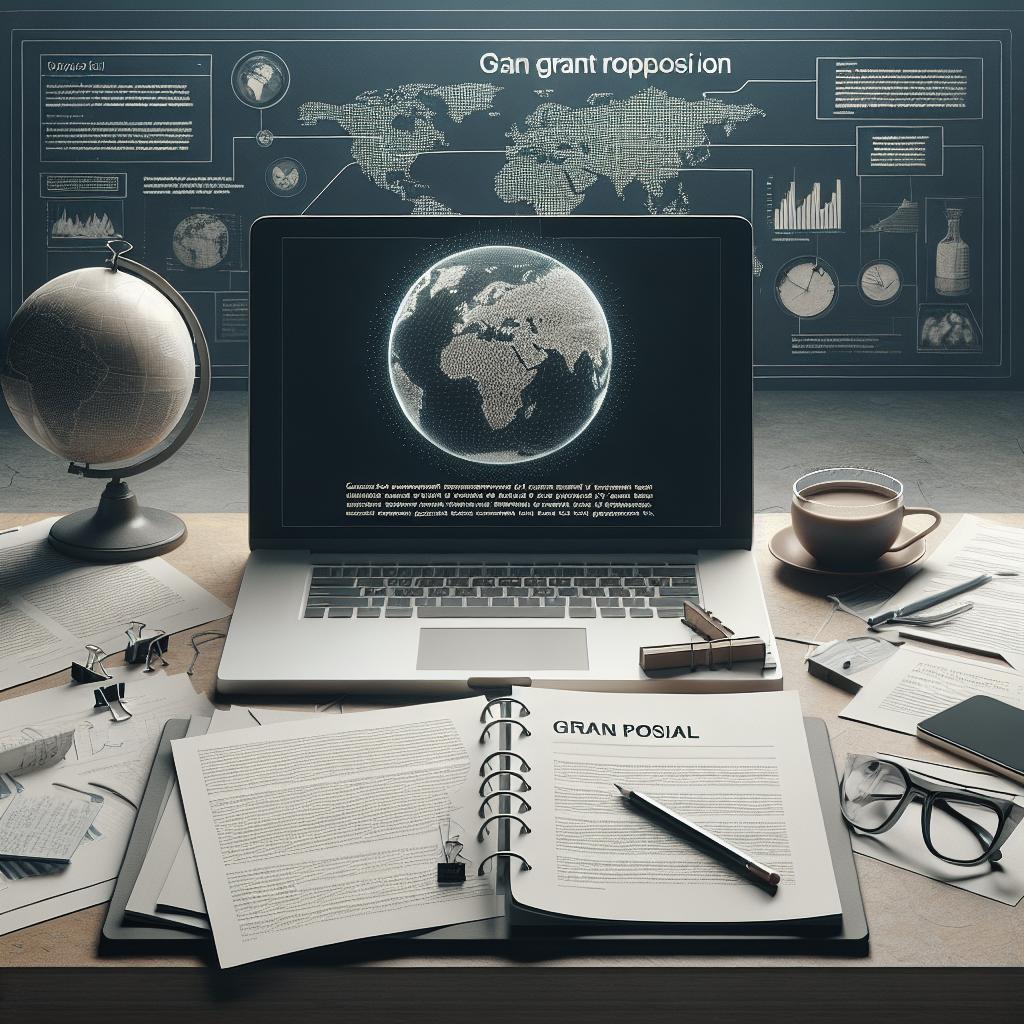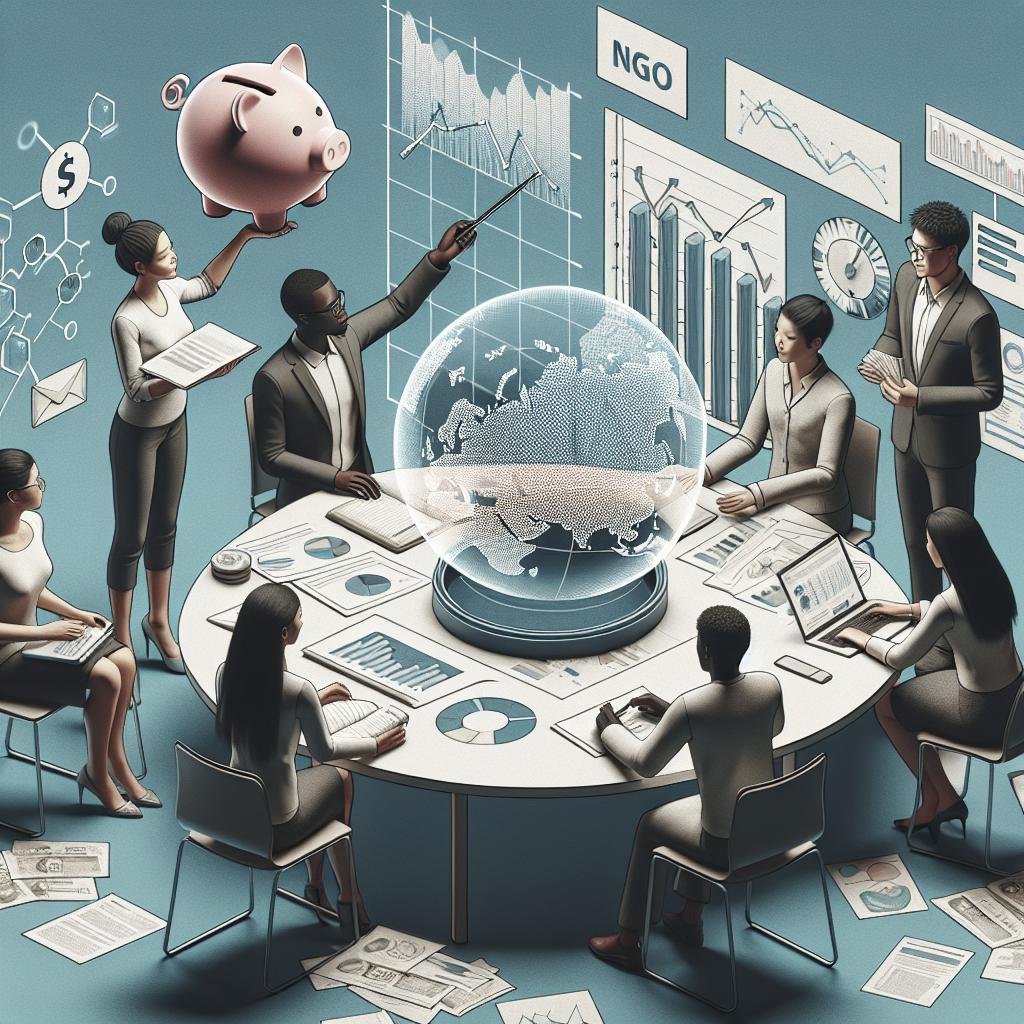“`html
How to Write Compelling Grant Proposals for NGOs
Writing a grant proposal is a critical skill for any NGO looking to secure funding for impactful projects. This guide aims to provide step-by-step instructions on crafting a compelling grant proposal. We delve into the reasons for seeking grant funding and share preparatory steps to undertake before drafting your proposal. Additionally, we explore constructing each vital component of a proposal, from cover letters to detailing project budgets. Finally, we examine how using document management software can streamline the proposal process. By following these steps, NGOs can enhance their chances of securing the funding needed to bring their initiatives to life.
How to write a grant proposal: a step-by-step guide
Writing a grant proposal can often seem daunting, but breaking it down into clear steps can simplify the process. The primary goal is to communicate the potential impact of your project clearly and persuasively to the funding organization. A successful grant proposal must align with the funder’s objectives while demonstrating the unique value your NGO can bring.
A well-structured proposal acts as a roadmap, guiding the reader through the problem your NGO addresses, the solutions you propose, and the benefits that will accrue if the project receives funding. By carefully organizing your proposal into distinct sections, each addressing distinct aspects of your project, you enhance the proposal’s coherence and persuasiveness.
Why should you seek grant funding
Grant funding is essential for NGOs to sustain and magnify their social impact. It enables the allocation of resources to innovative projects without the need to generate immediate financial returns, allowing NGOs to focus on long-term goals rather than short-term financial viability. Moreover, grants often come with additional benefits, such as increased organizational credibility and networking opportunities.
Additionally, grants can catalyze other funding opportunities. Securing an initial grant can position your NGO as a credible and trustworthy organization, which can subsequently attract additional funders and partners. Grants provide not only the financial means to initiate and expand projects but also the foundation upon which further development is built.
How can you get ready to write your grant proposal letter
1. Plan your time and expenses
Preparing a grant proposal is time-consuming. It’s essential to allocate sufficient time, not only for writing but also for the research and planning phases. In addition, organizing your expenses, such as travel costs for meetings or fees for accessing pertinent data, ensures that your budget is accurate and comprehensive.
A detailed timeline that includes specific milestones can keep your team on track and help avoid last-minute panics. Ensuring that all team members understand their roles and deadlines is crucial to the proposal’s success and smooth execution.
2. Consider both success and failure scenarios
While it’s important to focus on the proposal’s success, preparing for potential rejection can turn setbacks into learning opportunities. Identify potential weaknesses in your proposal, anticipate reviewers’ questions, and be ready to address them in a resubmission.
Additionally, by contemplating failure scenarios, you can develop a robust backup plan, ensuring that your organization remains mission-focused even if the proposal does not secure funding. This mindset enables resilience and strategic flexibility.
3. Have a strong understanding of your project
Comprehensive knowledge of your project underpins every aspect of your proposal. Ensure you have all the necessary data, expert opinions, and beneficiary feedback to support the proposal’s narrative. This depth of understanding not only helps in crafting compelling arguments but also prepares you to answer any questions funders might have.
By documenting detailed project plans and anticipated impacts, you demonstrate preparedness and commitment to your cause, which can significantly enhance your proposal’s credibility.
4. Register or create accounts
Most grants require you to register or create an account within their submission portal. This process can be time-consuming and often requires organizational documentation. Completing registrations in advance prevents unnecessary delays close to submission deadlines.
The earlier you begin this process, the better positioned you are to resolve any unforeseen technical issues or questions about submission timelines.
5. Submit a grant inquiry before writing a full grant proposal
Many funding organizations encourage or require a preliminary grant inquiry before a full proposal is submitted. This initial step helps ascertain eligibility and alignment with the funder’s objectives. This inquiry can save time and effort for both parties by filtering out proposals that do not meet the basic criteria.
By submitting a concise inquiry, you can receive valuable feedback that may refine your approach and increase the probability of securing funding when submitting the full proposal.
Key takeaways
Focused planning, anticipating challenges, meticulous project knowledge, early registration, and initial inquiries are essential steps in the grant proposal process. These elements lay the foundation for a well-structured and persuasive final proposal.
4. Save time by using document management software
Document management software can vastly improve efficiency by organizing documents, tracking changes, and simplifying collaborative efforts. This software ensures that team members can access the latest versions of documents, ensuring consistency and accuracy throughout the proposal.
Furthermore, utilizing automated templates and version controls reduces the administrative burden, allowing more time for the creative and strategic elements of crafting a compelling proposal.
How to create a compelling grant proposal
Step 1. Write a strong cover letter
The cover letter serves as your initial introduction to the grant reviewers, setting the tone for the entire proposal. It’s crucial to convey enthusiasm for your project, clearly state your request, and align your mission with the grantmaker’s objectives.
Ensure the cover letter is concise, professional, and tailored to the specific funder. Personalize it by referencing past communications or similar projects funded by the organization, showcasing your attention to detail and strategic fit.
Step 2. Create an executive summary
The executive summary provides a snapshot of your entire proposal, highlighting key points such as the project’s purpose, target audience, implementation strategy, expected outcomes, and resources required. It acts as both an introduction and a persuasive argument for why your project deserves funding.
A succinct executive summary can capture the reader’s attention and serve as a guide to the in-depth material that follows, helping to emphasize your nonprofit’s readiness and strategic clarity.
Step 3. Introduce your organization
This section should convey your organization’s history, mission, and accomplishments, establishing credibility. Highlight significant achievements and demonstrate how your experience aligns with the proposed project’s goals.
Include any collaborations with reputable partners, which can further strengthen your organization’s reputation and provide funders with additional confidence in your ability to execute the proposed project successfully.
Step 4. Write a direct problem statement
The problem statement is your opportunity to define the need or issue your project will address. Use data, research, and testimonials to convey the problem’s urgency and relevance. By clearly illustrating the problem, you lay the groundwork for explaining how your project offers a viable solution.
A compelling problem statement should evoke empathy and understanding, persuading the funders that addressing this issue is both necessary and impactful.
Step 5. State your goals and objectives
Clearly defined goals and measurable objectives provide a framework for your proposed activities. Ensure that each objective directly contributes to achieving your overall goal, and that they are Specific, Measurable, Achievable, Relevant, and Time-bound (SMART).
A well-articulated set of goals and objectives signals to funders that your project is thoughtfully planned and its impact is measurable, enhancing their confidence in your capacity to deliver results.
Step 6. Choose methods and strategies to achieve your goals
This section should detail the approach and methodologies your NGO will employ to meet the stated objectives. Be specific about the activities, timelines, and responsibilities, demonstrating logistical readiness and operational efficiency.
Emphasize innovative or evidence-based strategies that distinguish your proposal from others, highlighting your NGO’s unique approach to addressing the problem.
Step 7. Include success metrics
Defining success is critical for evaluation purposes. Outline the criteria and metrics by which your project’s success will be measured. These should align with your objectives and be practical to implement.
Present clear, attainable metrics to provide funders with confidence in your ability to track progress and quantify the impact of their investment.
Step 8. Include funding sources and ensure sustainability
Explain how your project will be funded beyond the grant period, demonstrating proactive planning and financial foresight. Include other committed or potential sources of funding to illustrate diversification and reduced dependency.
Presenting a sustainability plan reassures funders that their investment will have a lasting impact and that your organization has a clear strategy for continued operations.
Step 9. Outline your project budget
Your budget is a detailed financial representation of your project plan. Ensure it is comprehensive, realistic, and aligned with the project’s goals and objectives. Clearly categorize expenses and justify each cost as a necessity for project success.
A transparent budget reassures funders that your NGO can manage funds effectively, enhancing trust and legitimacy.
Simplify your grant proposal writing with efficient software
Leverage software tools to streamline the grant proposal process. These tools can assist in maintaining organization, tracking deadlines, and facilitating team collaboration. They support efficient data collection, analysis, and presentation, allowing your team to focus on proposal quality.
Examples of useful tools include grant writing software solutions like Instrumentl, which align funders with projects, and Smartsheet, which offers project management extensions suitable for tracking proposal progress and tasks.
Summary of main points
| Section | Key Points |
|---|---|
| How to write a grant proposal | Structured steps to effectively convey your project’s value. |
| Why seek grant funding | Resources without immediate returns, credibility, and further opportunities. |
| Preparing to write | Plan time/costs, plan for success/failure, understand project, register accounts, preliminary inquiry. |
| Efficiency tools | Document management software enhances collaboration and accuracy. |
| Creating a proposal | Clear cover letter, summary, organization introduction, problem statement, goals, methods, metrics, sustainability, budget. |
| Software | Improves organization, deadline tracking, data management, and collaboration. |
“`


